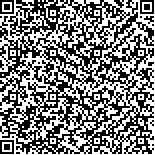| 本文已被:浏览次 下载次 |

码上扫一扫! |
|
|
|
| Cracking of mixed C4 hydrocarbons to ethylene and propylene |
|
YU Hai-ming
|
|
(Shtar Science & technology Group in China University of Petroleum , Dcmgying 257061, Shandong Province, China )
|
| Abstract: |
| Approximately 50% of mixed C4 hydrocarbons produced during FCC process is butene, which is a good feedstock to produce ethylene and propylene, especially propylene. The performances of LXH-I catalyst were investigated in 色 fixed-bed apparatus during the cracking reaction of the mixed C4 to ethylene and propylene. The results show that butene can be converted to ethylene and propylene with high selectivity. Simultaneously, a certain amount of C5 is also formed. The conversion of butane, and the yields of ethylene and propylene drop with time during the early stage of reaction, then maintain constant basically. The stable conversion of butene, and the yields of ethylene and propylene are around 58%,13% and 40% respectively. It is also shown that the cracking reactions of butene to ethylene and propylene may proceed via the mechanism of first dimerization then cracking. |
| Key words: mixed C4 hydrocarbons cracking ethylene propylene LXH-I catalyst |
|
|